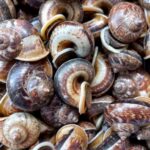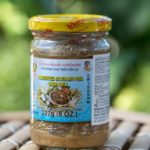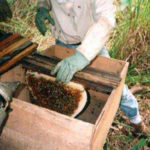Edible jellyfish (Aurelia sp.) is called ‘Maeng krapun jarn’ (Gulf of Siam) or ‘Lodchong’ (Andaman Sea) in Thailand. Usually, there are about three months a year when jellyfish appear for food. During this jellyfish run, sea fishermen earn a sizeable additional income by collecting these Cnidarians. However, edible jellyfish are available throughout the year, but in lesser numbers.
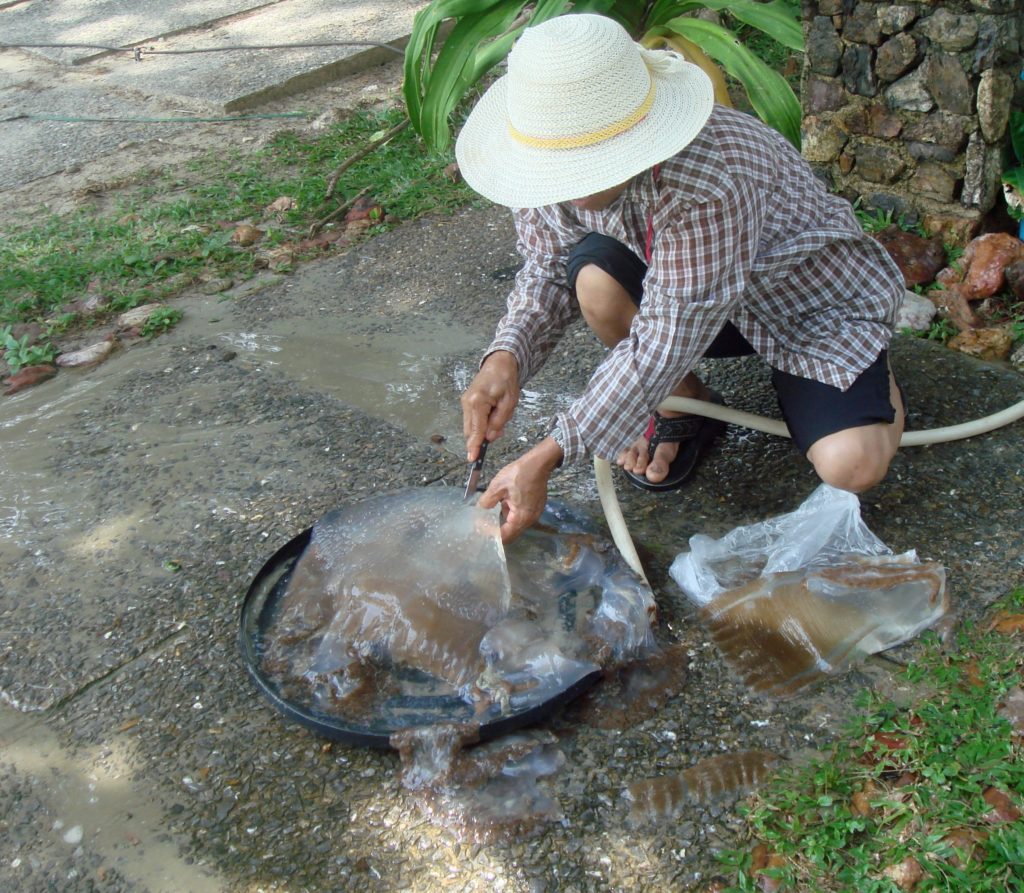
Which parts to eat from jellyfish
The jellyfish cap is considered the edible part of these Cnidarians, and all other parts (oral arms, tentacles, gonads, and so on) are removed. After that, the cap is either washed in seawater and scraped to remove the mucus or put half a day into ice water, as another possibility to remove the mucus.
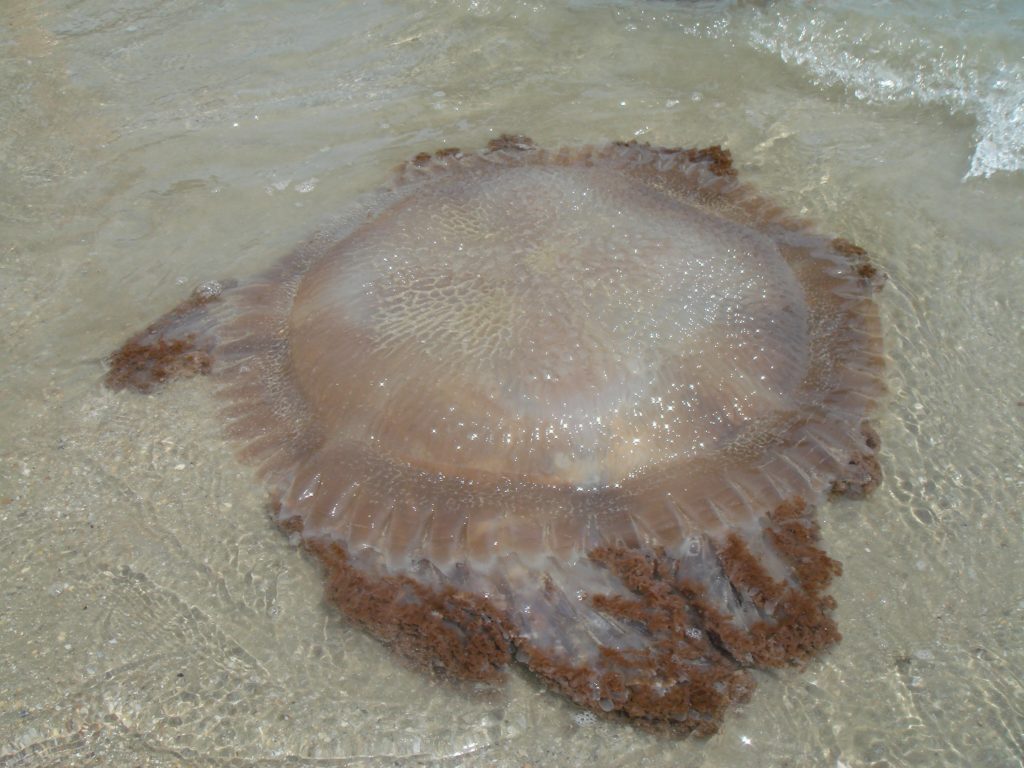
How can jellyfish be eaten?
In Thailand, it is very popular to eat fresh jellyfish for food, especially as an uncooked jellyfish salad. For that, thin slithers of the cleaned cap are cut into stripes and mixed with different veggies, mustard sauce, soy sauce, and sesame oil.
Fresh jellyfish easily spoils. Therefore, for export purposes, it will either be dried and reconstituted at the import location (mainly in Far East Asian countries) or fermented as an ingredient in other dishes.
According to a scientific paper by Gorbatenko, K.M., which can be found here, the calorific content of raw jellyfish, depending on species, is between 25 and 63 kcal/kg of raw matter. Aurelia limbata, for example, delivers 44 kcal/kg. Ash residues are about 80%, with very low essential organic and/or inorganic matter.
If the essential calorie requirement of an adult male is about 1850 kcal/day, it would be theoretically necessary to eat about 42 kg of raw Aurelia limbata meat per day to cover the daily energy requirement of an adult human male.
Lessons learned about eating jellyfish.
- Edible jellyfish are large organisms without long or stingy tentacles
- Only the cap is used
- Cap has to be cleaned from mucus
- Jellyfish should be eaten as fresh as possible
- Spicy sauces are a definite bonus to experience some taste
- Jellyfish can only be regarded as a possibility to experience different food textures compared to other types of food, but not as a source of nutrients.
.



